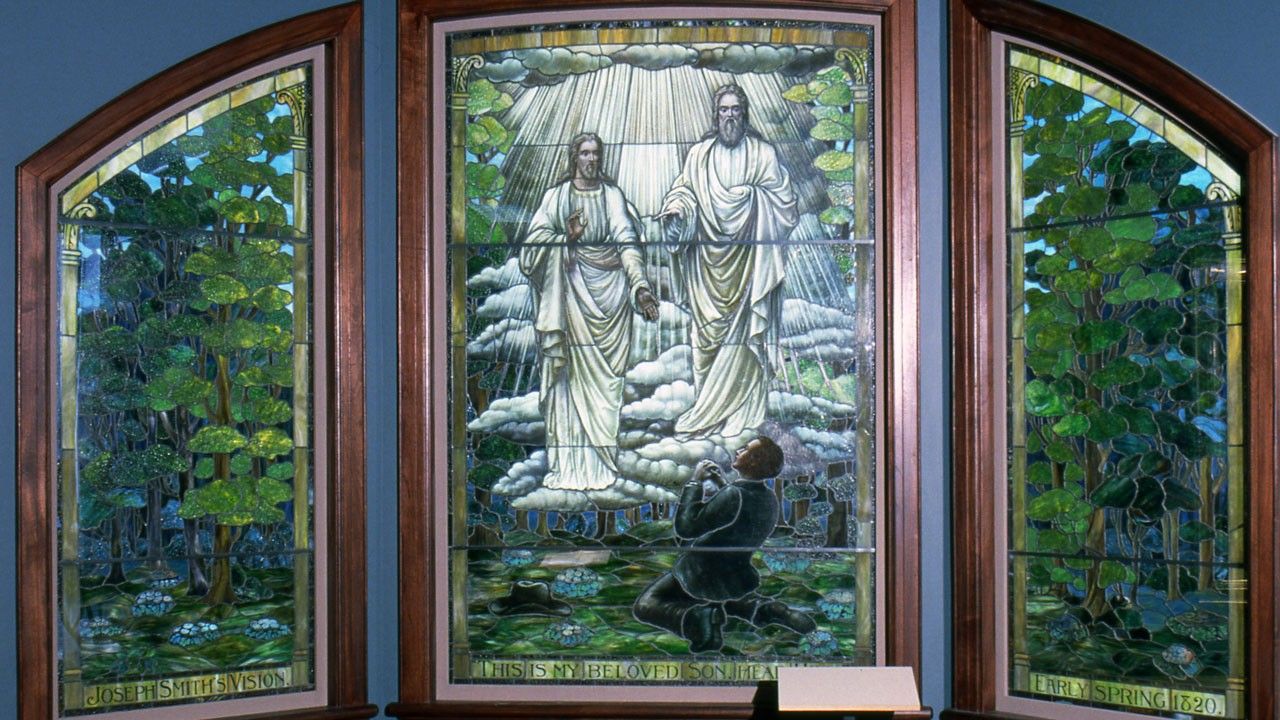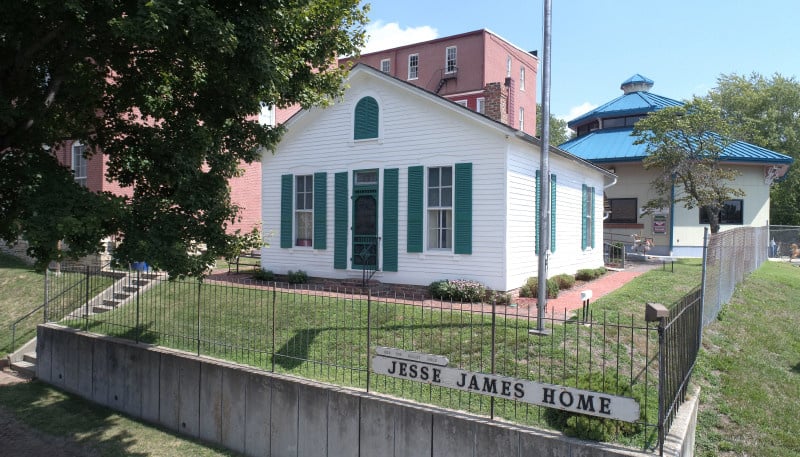Stained Glass in Utah's Churches
 | |
| This stained glass depicting the First Vision is located in the LDS Church Museum in Salt Lake City. |
This magnificent stained glass artwork portrays a moment of great historical significance: Joseph Smith's First Vision. The event took place in 1820 when a young Joseph Smith went into a grove of trees near his home in upstate New York to pray and seek guidance on which church to join. However, what he experienced during that prayer altered the course of history forever.
In response to his sincere prayer, Joseph was visited by God the Father and Jesus Christ. They conveyed to him that the fullness of the Gospel would be revealed to him at a future time. As a result, God restored the true Church of Jesus Christ through Joseph Smith. This restoration brought forth additional scripture, such as the Book of Mormon and the revelations in the Doctrine and Covenants. The authority to act in God's name, known as the priesthood, was also reinstated on earth. Furthermore, temples were established, allowing families to be sealed together for eternity. All these blessings became possible because of the profound impact of the First Vision and its subsequent events.
Joseph F. Smith, the sixth President of the Church and nephew of Joseph Smith, described the First Vision as the most significant event in the world since the resurrection of Jesus Christ.
During the early 20th century, there was a resurgence of interest in stained glass within American church architecture due to the Arts and Crafts movement. As a result, the subject of the First Vision became a popular theme for art glass windows in Latter-day Saint places of worship. One such example was a 12-foot window commissioned by the First Presidency for the Salt Lake Temple's Holy of Holies in 1892. Many other First Vision windows were also commissioned from different artists for Latter-day Saint meetinghouses.
The specific window in question was created in 1913 for the Adams Ward chapel in Los Angeles and is an example of the stained glass work from that period. The scene is painted on the back side of the glass, and along the bottom are the words of the Father to Joseph: "This is my Beloved Son. Hear Him!" While stained glass is no longer as popular in Latter-day Saint meetinghouses today, this artwork serves as a beautiful reminder of the pivotal moment in history - the First Vision, which remains a cornerstone of Latter-day Saint faith.
 |
| Old photo of stained glass of the First Vision commissioned for the Salt Lake Temple. |
 |
| Color photo of the First Vision stained glass in the Salt Lake Temple. |
Sources:
Church of Jesus Christ or Latter-day Saints. (n.d.). The First Vision Stained Glass. https://history.churchofjesuschrist.org/content/museum/museum-treasures-first-vision-stained-glass?lang=eng
Bridger Talbot. (2017, February 12). Latter-day Stained Glass: Part 2 - First Vision Stained Glass Depictions. Historic LDS Architecture. http://ldspioneerarchitecture.blogspot.com/2017/02/latter-day-stained-glass-part-2-first.html









